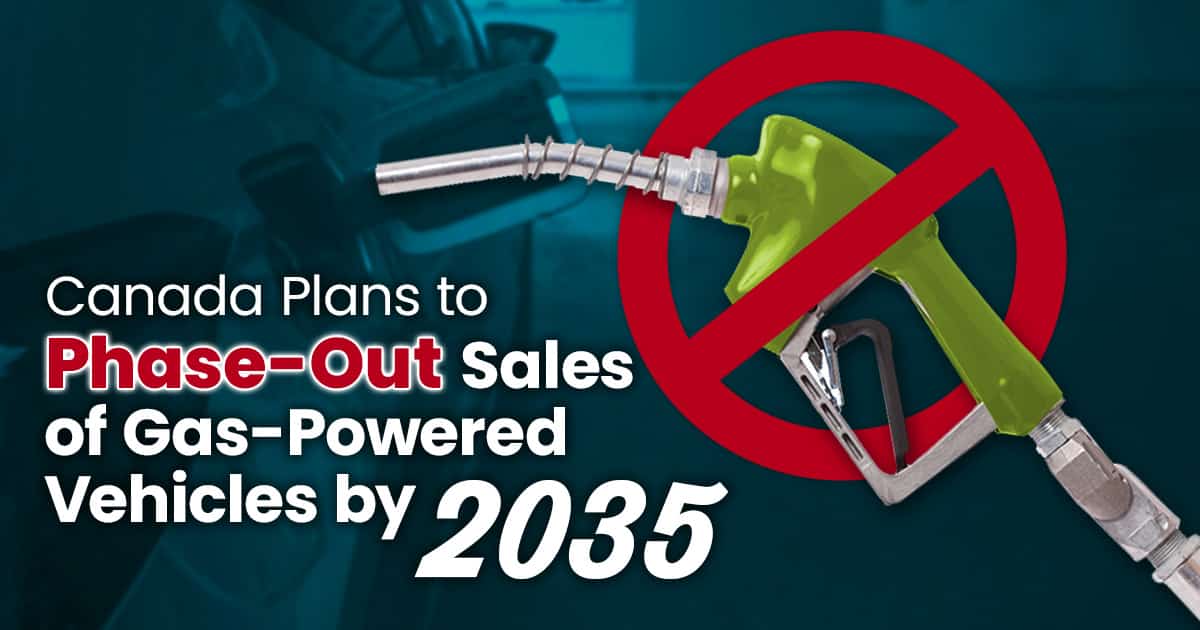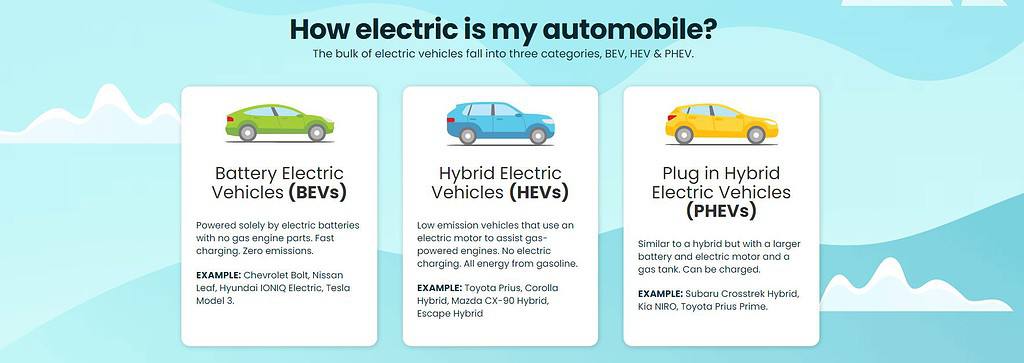
Canada’s Ambitious Plan to Ditch Gas Cars by 2035
January 24, 2024
Share:
Gasoline-powered vehicles will be a thing of the past under new regulations from the Government of Canada. Expanding on a previous mandate that required 60% of all vehicles sold in Canada to be electric by the year 2030, new regulations will mandate the complete transition to battery-operated vehicles by 2035.
That’s right, under new legislation proposed by Environment Minister Steven Guilbeault, all vehicles sold in Canada in the year 2035 must be electric. That gives auto manufacturers 12-years to figure out how to transform their product offerings to meet a rapidly changing outlook in the Canadian vehicle market. It also gives dealerships time to determine how to market electric vehicles to consumers. How do you convince those who are reluctant to make the transition?
In this blog, we walk through the sales targets set-up by the Canadian Government, discuss what infrastructure in Canada might need to be developed in order to meet these sales markers, and much more.
Canada Moving to Mandate Electric Vehicle Sales
As we reported in a previous blog, Environment Minister Steven Guilbeault announced in December 2022 that 20% of all passenger vehicles, trucks, and SUVs sold in Canada must be electric by the year 2026.
This past December, Minister Guilbeault unveiled additional targets in Canada’s ambitious plan to ditch gas-powered vehicles, outlining that between 2030 and 2035 Canada will ramp-up sales targets from 60% to 100%.
Here is a year-by-year breakdown of the sales targets.
| Year | Percentage of All Vehicles Sold That Must Be Electric |
|---|---|
| 2026 | 20% |
| 2027 | 23% |
| 2028 | 34% |
| 2029 | 43% |
| 2030 | 60% |
| 2031 | 74% |
| 2032 | 83% |
| 2033 | 94% |
| 2034 | 97% |
| 2035 | 100% |
Of course, this does not mean that gas-powered vehicles will magically disappear when 2035 arrives. While you will no longer be able to purchase a new gas-powered vehicle, they will remain on the roads for many years to come, since most vehicles have a road ready lifetime of 15-years or more. Therefore, people who purchase a vehicle that runs on gasoline in 2034, potentially won’t be looking to get rid of it until 2050 or later.
How Does The Mandate Work for Auto Manufacturers?
So how do manufacturers go about meeting these goals? And what happens if they don’t?
Well, let us look at 2026’s target of 20% as an example. That means 1 in 5 vehicles that a manufacturer puts on the market that year must be powered, at least in part, by electricity. Battery-electric vehicles (BEVs), hybrid-electric vehicles (HEVs), and plug-in hybrid electric vehicles (PHEVs) will all count towards the objective. Over the next 12-years, the percentage will increase until eventually sales of combustion engine vehicles, powered solely by gasoline or diesel, will be eliminated entirely.

A credit-system will be used to track each EV put on the market by a given manufacturer. Automakers that exceed their sales targets can bank these credits for future years or sell them to other manufacturers who fell short of that year’s goal.
Manufacturers who miss the proposed targets will face financial penalties, unless they purchase credits from automakers who exceeded their goals.
Canada Looks to Say Goodbye to Gas-Powered Cars by 2035
The mandate does not come without some skepticism, particularly from auto manufacturers who would like to see more government funded incentives to entice buyers to purchase an electric vehicle. Newfoundland and Labrador, New Brunswick, Nova Scotia, Prince Edward Island, Yukon, and Northwest Territories offer rebates for the purchase of an electric vehicle.
Additionally, British Columbia and Quebec already have EV sales goals set out by their provincial governments, alongside consumer rebate programs that subsidize the cost of an electric vehicle purchase.
Ontario briefly had a consumer rebate program, offering buyers up to $14,000 towards the purchase of an EV, but it was scrapped in 2018 by the Progressive Conservatives. Auto manufacturers and dealerships would like to see programs like these return and expand, so that consumers are more enthusiastic to make the switch and thus, sales targets are easier to reach.
“Achieving higher [zero-emission vehicle] ZEV sales levels depends on favourable market conditions, stronger consumer purchase incentives … widespread charging infrastructure [and] expanded grid capacity,” said Brian Kingston, president of the Canadian Vehicle Manufacturers’ Association.
Beyond consumer rebates, Brian Kingston points out that this mandate will require further infrastructure to achieve. The most pressing infrastructure issue? Public charging access.
According to a January 2023 report, Canada currently has nearly 20,000 public charging stations at 8,249 locations across the country. Additionally, the Government of Canada announced that it is investing $1.2 billion in new charging infrastructure, looking to build nearly 85,000 chargers by 2027.
With Statistics Canada estimating that Canada’s population is just over 40,500,000 people, 85,000 chargers would mean there is only 1 for every 476 Canadians. Natural Resources Canada estimates that the country will need between 442,000 and 469,000 public chargers by 2035, in addition to more at-home charging solutions. Needless to say, charging infrastructure still has a ways to go.
Environment Minister Steven Guilbeault also mentioned during his press conference that the government is working on revisions to the National Building Code of Canada to ensure that new homes built after 2025 will have the electrical capacity to accommodate vehicle charging at home.
Finally, the supply-chain for new electric vehicles likely needs to ramp-up to meet these targets. But with increased supply, electric-vehicle prices will presumably decline, making them more affordable for the average Canadian.
Already Have An Electric Vehicle?
If you have already made the switch to an electric vehicle and are searching for insurance, look no further! Insuring an electric vehicle is virtually the same as insuring one powered by a combustion engine – except, some insurance providers will actually give you a discounted rate for going green! Usually, the discount is between 5% to 10%.
Visit our Electric Vehicle Insurance page to learn more or get an instant quote by clicking the button below.






